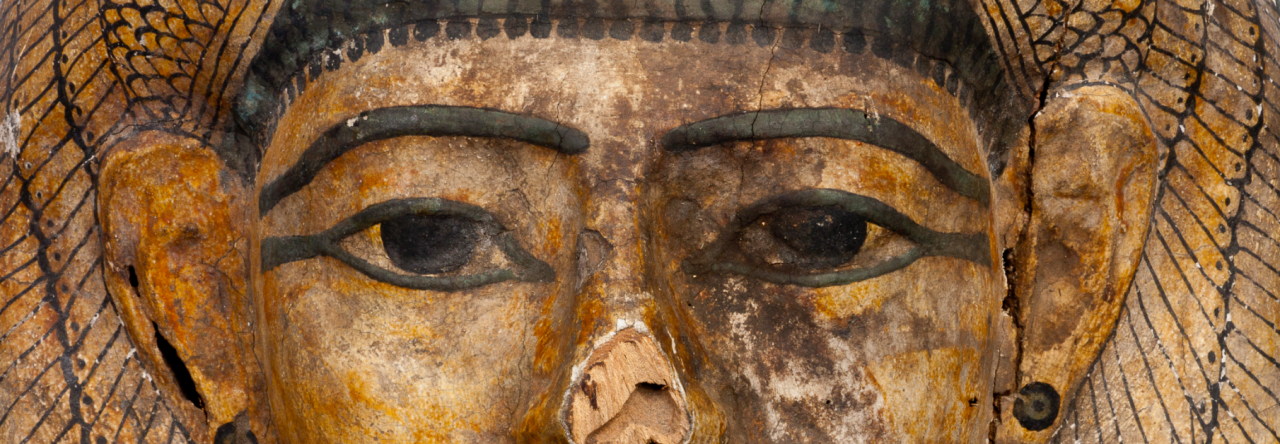The annotations on this edition of Ovid give us a hint as to where this particular book may have come from. The writing on the inside front cover reads “Lewis E. Harvie, Care of W.H. Harrison Esq… Amelia Co Va.” Directly below is another note: “I was there going to school at the Wigwam.”
William Henry Harrison, cousin of President William Henry Harrison (who is known for holding office for thirty-two days), founded Amelia Academy in the mid-nineteenth century. The courses were intended to prepare students to attend the University of Virginia—which, since UVA founder Thomas Jefferson was passionate about the classics, included a lot of Greek and Latin.
“To read the Latin and Greek authors in their original is a sublime luxury,” Jefferson wrote to Joseph Priestly in 1800, “and I deem luxury in science to be at least as justifiable as in architecture, painting, gardening, or the other arts. I thank on my knees him who directed my early education for having put into my possession this rich source of delight; and I would not exchange it for anything which I could then have acquired, and have not acquired since.” Jefferson willed his personal library of nearly 1600 books to the University of Virginia, but the University sold them in a bankruptcy sale in 1829. Thomas Jefferson was also close friends with George Long, who would mentor Gessner Harrison, another Harrison family member (#32).
Jefferson was largely unhappy with the classics skills of students entering the University of Virginia. In 1875, he wrote, “We were obliged last year to receive shameful Latinists into the classical school of the University; such as we will certainly refuse as soon as we can get from better schools a sufficiency of those properly instructed to form a class.” The coursework was so difficult that, from 1825 to 1874, 55% of students stayed for only one year. Remedial courses and tutors were introduced at the University. In 1828, About one in twenty students received a degree.
Thus, students needed any help available, and a school that prepared students for the University of Virginia was not unwelcome. Harrison’s Amelia Academy, established in 1833, was held at the Wigwam house, famous for previously housing William Branch Giles, who was a Virginia representative in both the House of Representatives and the Senate. In 1827, Giles was elected governor, and in 1830, he helped revise the Virginia Constitution. Giles started his own school at the Wigwam in 1825, distinct from the one Harrison started upon purchasing the house.
According to an 1834 newspaper advertisement, T.M.P. Powers taught Mathematics and Sciences, while Harrison himself taught Classics and general Literature. According to an 1835 advertisement, the textbooks at Amelia Academy were the same as the ones used at the University of Virginia. “Discipline impartial, parental, and christian,” an 1848 advertisement boasts, “and system of instruction, recitation, and reporting such as to secure accuracy and advancement.”
In 1871, the Richmond Enquirer published a testimonial to the Academy, writing that the students presented Harrison with a “handsome gold hunting-case watch” as a gesture of their respect and gratitude. “The number of boarders is limited to twenty-two,” it claims, “and it is not an easy matter for a young man to secure his tutorage there.” Students came from multiple different states, and sons of the Chief Executives of California and Kentucky were said to have been schooled there.
Bibliography
Jefferson, Thomas. “Letter from Thomas Jefferson to Joseph Priestly (1800).” Letter to Joseph Priestly, January 27, 1800.
Jefferson, Thomas. “Letter from Thomas Jefferson to William Branch Giles (1825). ” Letter to William Branch Giles, December 26, 1825.
Mikalson, Jon D. An Informal, Slightly Hagiographic History of Classics at the University of Virginia, From 1825 - 1970. University of Virginia, 2015.
Morrison, A. J. (Alfred J. (1917). The Beginnings of Public Education in Virginia, 1776-1860: study of secondary schools in relation to the state... D. Bottom, superintendent of public printing, 160.
"Richmond Enquirer. Fri, Aug 1, 1834" Newspapers.com. Richmond Enquirer, August 1, 1834. https://www.newspapers.com/article/richmond-enquirer-richmond-enquirer-fri/150093199/.
"Richmond Enquirer. Thu, Dec 31, 1835" Newspapers.com. Richmond Enquirer, December 31, 1835. https://www.newspapers.com/article/richmond-enquirer-richmond-enquirer-thu/150093385/.
"Richmond Enquirer. Fri, July 28, 1848" Newspapers.com. Richmond Enquirer, July 28, 1848. https://www.newspapers.com/article/richmond-enquirer-richmond-enquirer-fri/150097089/.
"Richmond Enquirer. Monday, July 31, 1871" Newspapers.com. Richmond Dispatch, July 31, 1871. https://www.newspapers.com/article/richmond-dispatch-richmond-enquirer-mon/150098305/.
“Wigwam.” The Virginia Department of Historic Resources, July 31, 2023. https://www.dhr.virginia.gov/historic-registers/004-0003/.





